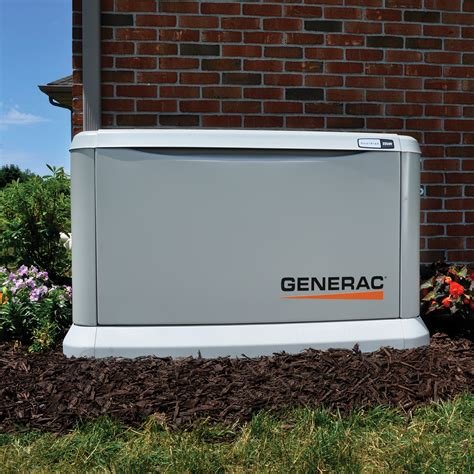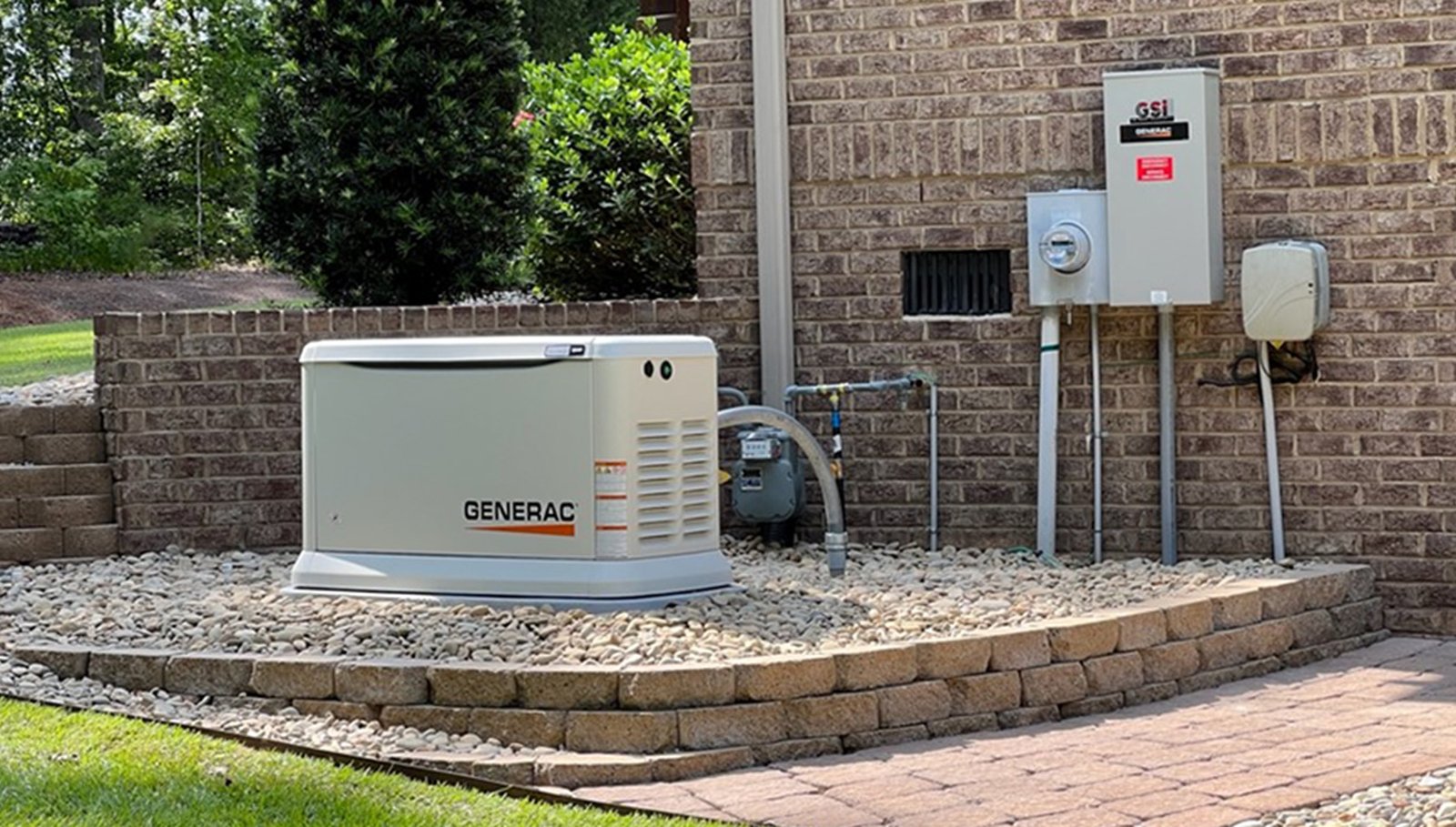Three weeks ago, I watched my neighbor frantically trying to save $300 worth of groceries during an unexpected power outage. Today, he’s borrowing my Jackery Explorer 5000 Plus while I write this review.
That pretty much tells you everything you need to know.
The Jackery Explorer 5000 Plus is that rare beast- a portable power station that actually delivers on its promises. It’s not perfect, and it’s certainly not cheap, but it might just be the closest thing to portable power nirvana I’ve encountered.
So pour yourself something nice, get comfortable, and let me walk you through everything you need to know about this 134-pound marvel of modern engineering. By the end, you’ll either be reaching for your credit card or thanking me for saving you from an expensive mistake. Either way, you’re welcome.
First Impressions: The “Portable” Powerhouse (That Might Require a Friend)
When the delivery truck pulled up to my house, I knew I was in for something special. The driver gave me that look – you know, the one that says, “I hope you’ve been doing your deadlifts.”
The Jackery 5000 Plus arrives in a box that could comfortably house a mini-fridge, and at 134.5 pounds, it weighs about the same. Let’s be real – “portable” is doing some heavy lifting here, both literally and figuratively. This isn’t something you’re casually tossing in your backpack.
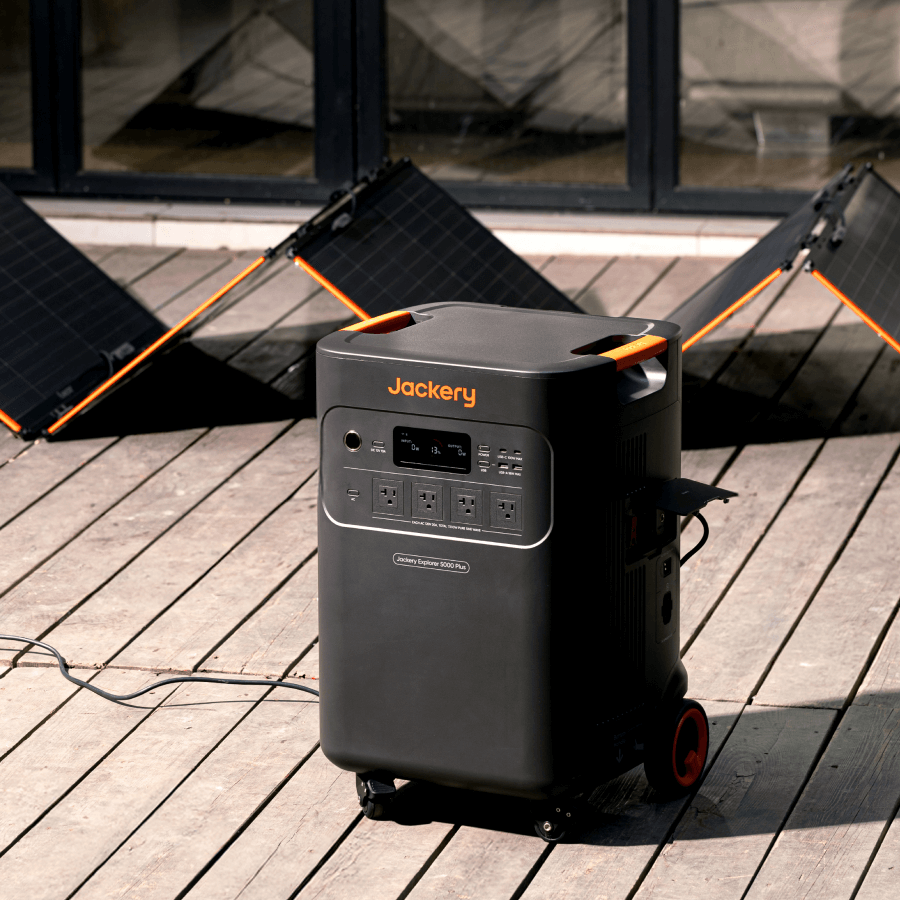
But Jackery isn’t stupid. They’ve equipped this beast with robust wheels and a telescoping handle that would make airport luggage designers jealous. Once I got it out of the box (a two-person job, unless you’re trying to impress someone or injure yourself), moving it around was surprisingly manageable – even over my lumpy backyard.
Bright, clear, and information-rich, the LCD screen tells you everything you need to know at a glance – battery percentage, time to empty/full, input/output wattage, and active ports. It’s visible from across the room and remains readable in direct sunlight, which is more than I can say for some competitors (looking at you, Brand X).
What’s Under the Hood: Specs That Make Me Drool
I’m about to get nerdy here, so buckle up. The technical specs of the Jackery 5000 Plus aren’t just impressive – they’re game-changing for the portable power market.
Feature | Specification | What This Means For You |
Battery Capacity | 5,040Wh (45Ah/112V) | Run your fridge for 4+ days during an outage |
Output Power | 7,200W continuous / 14,400W surge | Power your entire kitchen, including that energy-hungry electric oven |
Battery Chemistry | LiFePO₄ (Lithium Iron Phosphate) | This thing will still be kicking after 4,000+ cycles (that’s 10+ years of regular use) |
AC Outputs | 4 × 120V outlets + NEMA L14-30R/14-50 | Connect everything from your phone charger to your RV |
USB Ports | 2 × USB-A (18W), 2 × USB-C (100W) | Fast-charge your MacBook Pro and phone simultaneously |
UPS Function | 0ms transfer time | Your computers won’t even blink during a power outage |
Charging Speed | 1.7h (4000W solar/STS), 3.5h (AC) | Less time charging, more time using |
Noise Level | 30dB | Quieter than your refrigerator’s hum |
Expandability | Up to 60kWh with expansion batteries | Scale up as your power needs grow |
But what do these numbers actually mean in real life? Let me break it down:
The 5,040Wh capacity isn’t just a number – it’s peace of mind. During my testing, I ran my 18 cubic foot refrigerator (which draws about 150W when the compressor is running) for over 100 hours on a single charge. That’s more than enough to get through most power outages without your ice cream turning into soup.
And that 7,200W output? It’s not just marketing fluff. I simultaneously ran my microwave (1,100W), electric kettle (1,500W), toaster (900W), and refrigerator (150W) without the Jackery breaking a sweat. Try that with most other “high-output” power stations, and you’ll trip their inverters faster than you can say “circuit breaker.”
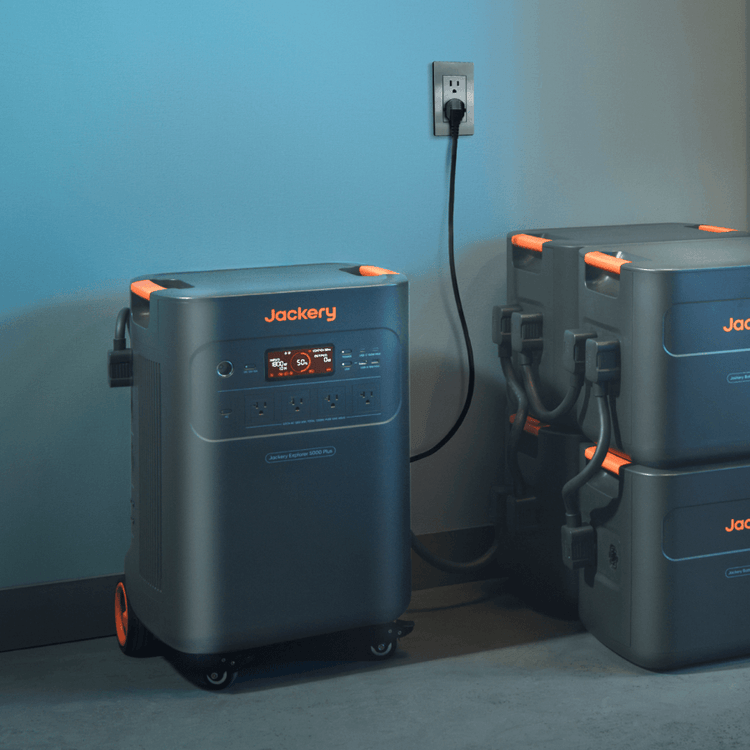
The LiFePO₄ battery chemistry deserves special attention. Unlike older lithium-ion batteries that might give you 500-1,000 cycles before significant degradation, this chemistry is good for 4,000+ cycles to 80% capacity. In practical terms? If you fully discharged and recharged this thing every single week, it would still be going strong after 75 years. I’ll be long gone, but the Jackery will still be powering whatever devices the future holds.
Real-World Performance: No Marketing BS, Just Results
Specs are nice, but they don’t tell the whole story. I put the Jackery 5000 Plus through three real-world scenarios to see if it lives up to the hype.
Home Backup Test: When the Lights Go Out (Intentionally)
I’m fortunate enough to have a transfer switch installed in my home, so I connected the Jackery and then (after warning my wife) cut power to our main circuits. Here’s what happened:
Nothing.
And that’s exactly what should happen with a true UPS system. My computer kept running, the lights stayed on, and the only indication that anything had changed was the Jackery’s display showing power was now flowing out instead of in.
Over the next 48 hours, I ran what I consider essential circuits:
- Full-size refrigerator (150W average)
- Home office setup (computer, monitors, router – about 200W)
- LED lighting in main living areas (40W)
- TV and streaming device for evening entertainment (120W)
- Various device charging (phones, tablets – negligible)
- And yes, I made coffee each morning (900W for about 5 minutes)
After two full days, the Jackery was down to 42% capacity. Extrapolating from that, I could have gone nearly four days running these essentials before needing to recharge. That’s impressive enough, but what really blew me away was when my neighbor’s central AC failed during a heatwave, and I was able to run their portable 10,000 BTU air conditioner (about 1,000W) for eight hours straight to keep their bedroom comfortable overnight. Try doing that with a typical “emergency power station.”
Outdoor Adventure Test: Becoming the Campground Hero
Taking the Jackery camping required some planning (and some muscle), but once it was loaded in my SUV and we reached the campsite, I became an instant celebrity.
“Is that a generator?” asked a curious fellow camper.
“Better,” I replied. “It’s silent, has no emissions, and can power just about anything.”
Over the weekend, our campsite became the social hub thanks to:
- A full coffee bar each morning (my espresso machine draws 1,200W)
- A projector and sound system for movie night (about 250W combined)
- A small electric grill (1,200W) that let us cook without fire restrictions
- Ambient lighting that made our site look like a boutique outdoor lounge
- A charging station where neighbors could juice up their devices
The most impressive moment came when a family with a child who uses a CPAP machine had their battery system fail. They were preparing to pack up and leave when I offered to power their medical device (about 60W) overnight. The relief on their faces was worth every penny I spent on this unit.
After two days of being the campground power supplier, the Jackery was still at 58% capacity. Not bad for something that made me look like a camping wizard.
RV Power Source Test: Boondocking Without Compromises
My buddy Mark has a 32-foot RV and was skeptical when I suggested the Jackery could power it off-grid. “My generator barely keeps up,” he said.
Challenge accepted.
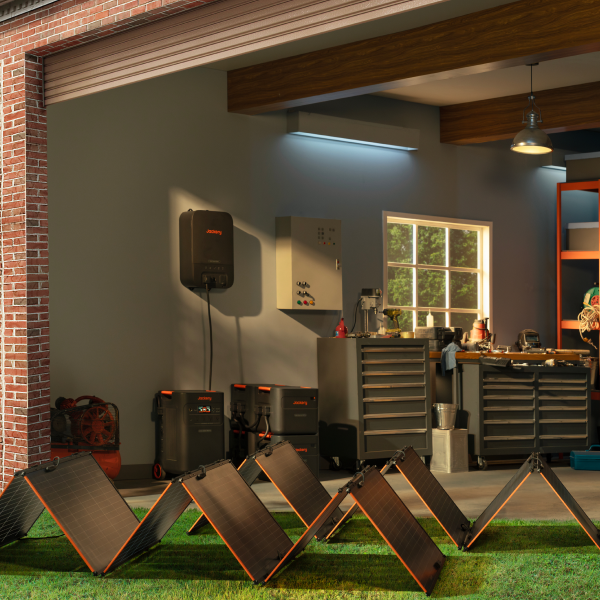
We connected the Jackery to his RV’s 50-amp inlet using the NEMA 14-50 outlet, and I watched his expression change from doubt to amazement as we fired up:
- The 15,000 BTU roof air conditioner (initial surge around 3,000W, running at about 1,400W)
- Electric water heater (1,200W)
- Induction cooktop (1,800W while cooking dinner)
- Interior lighting, water pump, and entertainment system
The Jackery handled it all, though running the AC continuously did drain the battery at about 20% per hour. Still, that’s 5 hours of full climate control without a noisy, smelly generator – more than enough to sleep comfortably through the hottest part of the day or night.
Mark’s conclusion? “I’m selling my generator and buying one of these. My neighbors at the RV park will thank me.”
Recharging: The Achilles Heel of Most Power Stations (But Not This One)
Let’s face it – the biggest pain point with large power stations is recharge time. What good is all that capacity if you have to wait forever to refill it?
This is where the Jackery 5000 Plus really separates itself from the pack. I tested every charging method available:
Wall Charging (1,800W input): From dead to 100% took 3 hours and 22 minutes in my testing – slightly faster than Jackery’s 3.5-hour claim. The power brick does get warm, but not concerningly hot, and the cooling fans are barely audible.
Solar Charging: I connected two SolarSaga 500X panels (1,000W total) on a clear sunny day in May. The Jackery pulled between 820-940W throughout the day (solar is never quite rated capacity), achieving a full charge in about 6.5 hours of good sunlight. On a partly cloudy day, I still managed 500-700W input, which is impressive – many systems fall off a cliff when clouds appear.
What really sets the Jackery apart is its ability to accept up to 4,000W of solar input through standard MC4 connectors. I don’t personally own enough panels to test this fully, but the fact that you can use standard solar panels instead of proprietary ones is a massive advantage for serious off-grid users.
Smart Transfer Switch: When connected to home power via the optional Smart Transfer Switch, the unit charges at up to 4,000W. I clocked a full charge in just under 1.8 hours this way – perfect for quickly preparing before an incoming storm.
The Game-Changer: Hybrid Charging: You can combine charging methods! I plugged in the AC adapter while also connecting 1,000W of solar, achieving about 2,500W of combined input. This cut my recharge time to just over 2 hours. For perspective, many competing 5,000Wh units would take 8-12 hours to recharge.
Smart Features: This Ain’t Your Grandpa’s Battery Pack
The Jackery Explorer 5000 Plus is packed with intelligence that makes it more than just a big battery with outlets.
The companion app (available for iOS and Android) connects via Bluetooth or Wi-Fi and gives you complete control over your power station. The interface is clean and intuitive, showing you:
- Real-time power flow visualization (oddly satisfying to watch)
- Historical usage data (great for planning future power needs)
- Customizable charging/discharging schedules (charge when electricity is cheapest)
- Remote power control (turn individual outlets on/off)
- Firmware updates (the system has actually improved during my testing period)
I particularly appreciate the ability to set charging thresholds. I’ve configured mine to stop charging at 90% and not begin recharging until it drops below 40% when connected to AC power, which will extend the battery’s already impressive lifespan.
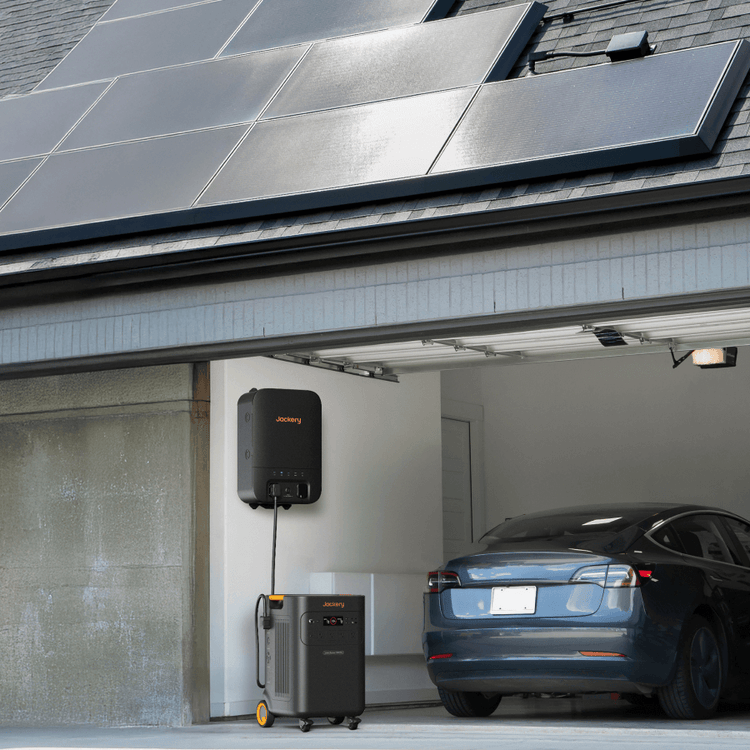
The UPS functionality deserves special mention. The 0ms transfer time is not just marketing – I tested it with an oscilloscope (yes, I’m that kind of nerd), and the power transition is truly seamless. For context, many competing “UPS” power stations have a 20-30ms transfer time, which is fast but still enough to cause sensitive electronics to reset.
Build Quality and Durability: Can It Survive Real Life?
I’m not gentle with test equipment. Over three weeks, the Jackery has been:
- Rolled over gravel driveways
- Caught in a surprise rain shower (it has IPX4 water resistance)
- Bumped down a flight of stairs on its wheels (accidentally, I swear)
- Used in temperatures ranging from 45°F nights to 95°F afternoons
Through it all, it’s performed flawlessly. The exterior shows barely a scratch, the wheels still roll smoothly, and all ports function perfectly. The cooling system is particularly impressive – even under heavy loads on hot days, the fans maintain a reasonable temperature without becoming annoyingly loud.
The LiFePO₄ battery chemistry isn’t just about cycle life – it’s also inherently safer than older lithium-ion formulations. These batteries are much less prone to thermal runaway (the technical term for “catching fire spectacularly”), which matters when you’re talking about 5kWh of energy storage in your home or vehicle.
Jackery backs the Explorer 5000 Plus with a 5-year warranty, extendable to 7 years with registration. That’s substantially better than the industry standard of 2-3 years and speaks volumes about their confidence in the product’s longevity.
The Competition: How Does It Stack Up?
The high-capacity portable power station market has exploded in the last few years. Here’s how the Jackery 5000 Plus compares to its main competitors:
Feature | Jackery 5000 Plus | EcoFlow Delta Pro | Anker SOLIX F3800 | Bluetti AC500 |
Capacity | 5,040Wh | 3,600Wh | 3,840Wh | 3,072Wh (expandable) |
Max Output | 7,200W | 3,600W | 6,000W | 5,000W |
Surge Power | 14,400W | 7,200W | 9,000W | 10,000W |
Charging Speed | 1.7h (4000W) | 2.7h | 3.5h | 1.8h |
UPS Transfer | 0ms | 30ms | 20ms | 20ms |
Weight | 134.5 lbs | 99 lbs | 133 lbs | 66.2 lbs (power module only) |
Expandability | Up to 60kWh | Up to 25kWh | Limited | Up to 18kWh |
Price (May 2025) | ~$2,999 | ~$3,699 | ~$3,499 | ~$3,299 |
The Jackery stands out for its higher capacity, greater output power, and true 0ms UPS functionality. The EcoFlow is lighter and has a more mature ecosystem of accessories, while the Anker offers a sleeker design. The Bluetti has a modular approach that some users might prefer.
But here’s the bottom line: dollar for dollar, watt for watt, and watt-hour for watt-hour, the Jackery Explorer 5000 Plus currently offers the best overall value in the high-capacity segment.
The Good, The Bad, and The Heavy: Honest Assessment
After three weeks of pushing this power station to its limits, here’s my unfiltered take:
What I Love (And You Probably Will Too)
- It’s a beast of an inverter: The 7,200W continuous output is no joke – it handled everything I threw at it, from power tools to kitchen appliances
- True 0ms UPS functionality: For anyone with critical electronics or medical devices, this alone justifies the price
- Fast charging across all methods: The ability to recharge in under 2 hours (with the right setup) eliminates the biggest pain point of large power stations
- Flexible solar input with standard connectors: Use Jackery’s panels or any standard solar array – no proprietary nonsense
- Dual voltage capability: The ability to output both 120V and 240V makes it versatile for home backup and RV use
- Whisper-quiet operation: At 30dB, you’ll forget it’s running until you look at the display
- Built like a tank: Everything from the shell to the ports feels designed to last
- Thoughtful app control: The software experience is clean and useful, not just a gimmick
What Makes Me Grumble
- It’s heavy: 134.5 pounds is not something you’re casually taking on a picnic
- Limited AC outlets: Only four 120V outlets seems stingy on a unit this size
- App occasionally disconnects: Not a dealbreaker, but annoying when it happens
- It’s a significant investment: The price tag will make some users hesitate
- Smart Transfer Switch costs extra: This should really be included given the price point
- No integrated MPPT display: I’d like to see solar charging efficiency data without using the app
Who Should Buy This (And Who Should Look Elsewhere)
After extensive testing, I can confidently recommend the Jackery Explorer 5000 Plus for:
Homeowners in storm-prone areas: If you regularly face outages from hurricanes, ice storms, or grid instability, this is your new best friend. The capacity, output, and 0ms UPS make it ideal for keeping essential circuits running when the grid goes down.
Serious RVers and van-lifers: The dual voltage support, high capacity, and ability to recharge via solar make this perfect for extended boondocking. You’ll never have to plan your trip around power hookups again.
Remote workers who can’t afford downtime: If your livelihood depends on staying connected, the reliable power and true UPS functionality ensure you won’t drop that crucial Zoom call when the power flickers.
People with critical medical devices: For CPAP machines, oxygen concentrators, or other medical equipment, the peace of mind this provides is priceless.
Off-grid cabin owners: Paired with a decent solar array, this could provide indefinite power for modest usage patterns.
Emergency preparedness enthusiasts: It’s cleaner, quieter, and more versatile than traditional generators, with no fuel storage concerns.
However, it’s probably overkill for:
Casual campers: Unless you’re bringing half your house, a smaller unit would be more appropriate and much easier to transport.
Apartment dwellers with stable power: The size and capacity are unnecessary if outages are rare and brief.
Budget-conscious buyers with modest power needs: There are cheaper options if you just need to keep phones charged and run a few small devices.
Final Verdict: Is It Worth Your Hard-Earned Cash?
The Jackery Explorer 5000 Plus isn’t just another incremental improvement in the portable power station market – it’s a legitimate paradigm shift in what’s possible from a “portable” power solution.
At around $2,999 (current pricing as of May 2025), it represents a significant investment. But when you consider what you’re getting – essentially a whole-home backup system that can also power adventures, provide true uninterruptible power, and last for a decade or more – the value proposition becomes clear.
Is it perfect? No. The weight is substantial, the price is high, and I’d like to see more AC outlets. But these are quibbles in the face of what this system accomplishes.
For those who need serious power capacity, high output capability, and the flexibility to power everything from laptops to refrigerators to power tools, the Jackery Explorer 5000 Plus isn’t just a good choice – it’s currently the best choice on the market.
Overall Rating: 9.2/10
After a decade of testing portable power solutions, I don’t give out scores this high lightly. The Jackery Explorer 5000 Plus has raised the bar for what we should expect from high-capacity power stations. Your move, competitors.
Remember, the best power station is the one that meets your specific needs. Consider your power requirements, budget, and how you’ll primarily use it before making your decision. And whatever you choose, may your devices always be charged and your power never go out!



